#Ouarzazate Solar Power Station
Text
The World is Amazing, Actually (Part 11 or 12, I lost count)
It's been awhile since I made a post about how fucking rad the world actually is, and amidst all the pandemics and climate change and economic troubles, I felt the need.
So:
Today’s Wild Place (The Earth is An Alien Planet):
The Danakil Depression, Ethiopia:
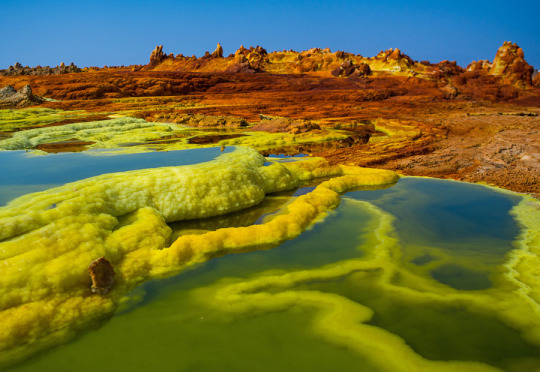
The Danakil Depression is probably the closest you'll ever be able to come to standing on the surface of Venus (without the crushing atmosphere, of course). Choking sulphuric acid and chlorine gases fill the air, while acid ponds and geysers pepper the landscape.
- Daisy Dobrijevic, published July 4, 2022
(BTW scientists recently discovered microbes capable of surviving in this toxic, extremely hot environment, which means...well, even if we kick the bucket, life will continue. There's something comforting in knowing that no matter how bad we screw up...life will go on.)
Today’s Incredible Feat of Engineering (look! at what! we made!):
Ouarzazate Solar Power Station in Morocco, which has gone solar in a big way.


(Which means they are making a huge contribution to helping fight toxic pollution, noise pollution, water use, land destruction, and carbon emissions. No really, there are charts. Reducing carbon emissions charts. Reducing irresponsible land use charts. Charts! Graphs! Data samples!)
Today’s Cool Life Form (the rare, the weird, the beautiful):
The Hispaniolan Solenodon.

A very rare, nocturnal, shrew-like creature that is one of the few mammals able to produce venom. Look at him! Look at his snout! He's just a little guy! He will bite you and run away on his back legs! He's rare, and endangered, but not gone! Not gone yet, bitches!

(Bonus: 10 Fun Facts About the Solenodon)
Today’s Bizarre Mystery (no, seriously, wtf?):
The Great Unconformity.
Hey, remember the Grand Canyon? Remember how we can see the passage of time through each layer, going back hundreds of thousands of years?
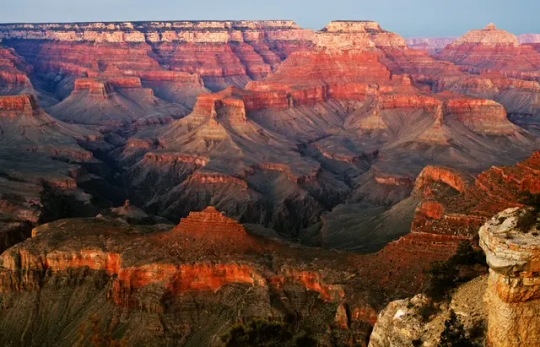
Did you know that apparently, on this massive record of earth's geological history, there's a chunk of time missing? Science has some hypotheses about how and why this happens (and yes, it's been found in more than one place), but they are really only hypotheses, and no one's really sure what happened to, oh, 1.6 billion years, give or take.
Today’s Act of Humanity (yes, we are worth the effort):
After fleeing a war, Ukrainians rush to help Mississippi tornado victims.

"They made the 16-hour drive south to donate bottled water and volunteer with aid workers, buoyed by the idea that they could help a community facing a similar struggle to theirs.
“We had to leave our home,” Pavliuk told The Washington Post in Ukrainian, in an interview interpreted by Hrebenyk. “And they don’t have a place to go back, either.”"
NEW CATEGORY:
Today's Good News About The Future (No, It's Not Too Late and Anyone Who Says Otherwise is Selling Something):
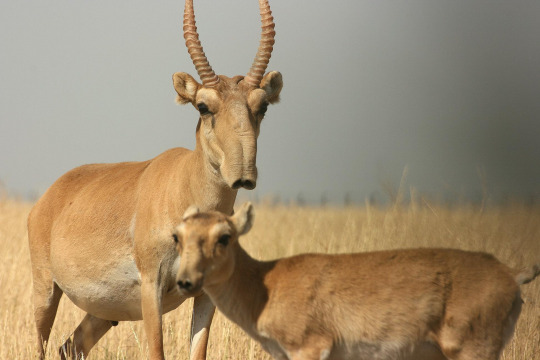
The Saiga Antelope, a species critical to the continued survival of huge swathes of grassland, that in 2003 was down to 6% of it's population and already extinct in it's natural habitat of China and Ukraine, has rebounded back to almost 2 million strong thanks to conservation efforts.

Previous | Next
#the world is amazing#planet earth#nature#good news#animals#danakil depression#Ouarzazate Solar Power Station#morocco#Hispaniolan Solenodon#little creature#saiga antelope#climate change#climate conservation#hope#ukraine immigrants#people are okay#mississippi tornado#look for the helpers#I'm so tired of being worried about the world#but it's not all bad
278 notes
·
View notes
Photo



Sunny Days in Morocco’s Ouarzazate Basin For centuries, caravan traders used villages in the Ouarzazate basin in Morocco as a stopover on journeys between North Africa and Europe. In recent decades, the entertainment industry discovered the small sedimentary basin flanking the High Atlas and Anti-Atlas mountains and the area has become a center of movie and television production. Most recently, the renewable energy sector has capitalized on the region’s dry, sunny weather by building a large concentrated solar-thermal power plant. The Operational Land Imager (OLI) on Landsat 8 acquired an image (centre) of the plant and the western part of the Ouarzazate basin on December 17, 2022. An image acquired in 2015 image (top) shows the same area when the plant was only partly built. The Ouarzazate Solar Power Station (also called Noor Power Station), located 10 kilometers (6 miles) northeast of Ouarzazate, has an installed capacity of 582 megawatts. The plant supplies electricity to nearly 2 million Moroccans and prevents emissions equivalent to 1 million metric tons of greenhouse gases per year, according to Moroccan officials. The complex is divided into four power sections. Noor I, completed in 2015, is made up of thousands of parabolic mirrors that focus sunlight to heat tubes, filled with thermal oil, that run the length of the mirrors. The heated oil is used to make steam that turns a turbine to generate electricity. The thermal oil can also be used to heat molten salts in storage tanks that keep the salt hot enough to generate steam well after sunset. Noor II, completed in early 2018, uses similar mirrors but has a dry cooling system that significantly reduces the amount of water required to run the system. Noor III, also completed in early 2018, includes 7,400 Sun-tracking mirrors called heliostats that are arrayed in a circular pattern around a tall power tower that heat a molten salt fluid. Noor IV, completed later in 2018, runs on photovoltaic panels, which generate with semiconductors. Note the lower water level on the reservoir behind the Barrage Al Mançour Ad-Dahbi in December 2022 compared to December 2015. In 2022, this part of Morocco was in the midst of a severe drought. This has made apportioning the region’s scarce water resources between the solar plant, farmers, nearby mines, and urban water users in Ouarzazate and other towns challenging. Growth and development in Ouarzazate have put additional pressure on natural resources. The city’s population has swollen by more than 80,000 people since the early 1990s, driven in part by economic development associated with the power plant and other industries but also due to the region’s active tourism industry. One of the main draws for tourists include Ouarzazate’s movie and television industry. The region hosts major studios and has served as the filming location for productions such as Lawrence of Arabia, Gladiator, The Mummy, Game of Thrones, and many others. Another draw is Aït Ben Haddou, a UNESCO World Heritage Site northwest of Ouarzazate that hosts a fortified town built with clay and featuring traditional southern Moroccan architecture. NASA Earth Observatory images by Allison Nussbaum, using Landsat data from the U.S. Geological Survey. Story by Adam Voiland.
5 notes
·
View notes
Photo
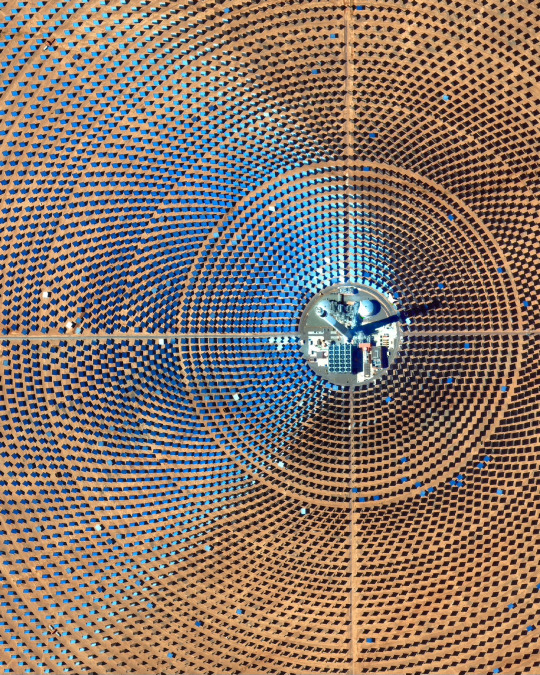
Noor III is the newest stage of the Ouarzazate Solar Power Station in Ouarzazate, Morocco. This site utilizes a concentrated solar power (CSP) tower design with 7,400 heliostat mirrors that focus the sun’s thermal energy toward the top of a 820-foot-high (250 meters) tower at its center. At the top of the tower, there is molten salt, which is used in this process due to its ability to get very hot (500–1022°F / 260–550°C). The molten salt then circulates from the tower to a storage tank, where it is used to produce steam and generate electricity. The Noor III CSP tower can produce and then store enough energy to provide continuous power to the surrounding area for ten days.
See more here: https://bit.ly/3hXcGXV
31.059494°, -6.870344°
Source imagery: Maxar
354 notes
·
View notes
Photo


Ouarzazate (Noor) Solar Power Station, Morocco
Moroccan Agency for Sustainable Energy
image credit: Vincent Fournier
49 notes
·
View notes
Photo
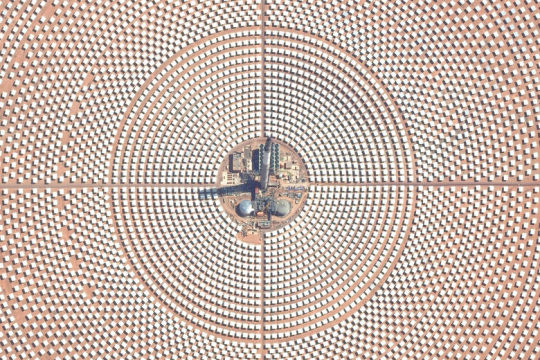
Ouarzazate Solar Power Station | Morocco
Ouartzazate Solar Power Station, also known as Noor (نور) Power Station is the largest concentrated solar power plant in the world, producing 510 megawatts. The complex is being constructed in four separate parts. Noor I, Noor III, and Noor III are complete. The station also produces power at night, by banking daytime energy in salt and releasing it from the molten salt at night.
Ouartzazate Power Station is located in Drâa-Tafilalet, where agriculture and animal husbandry have been the main economic activities. Desertification has adversely impacted the region.
Learn more below:
youtube
93 notes
·
View notes
Link
Morocco is on the right path regarding renewable energy efforts (relative to most other countries). As per 2019 data, the country meets 35% of its electricity needs with renewables. And it’s leading in solar endeavors. For example, its Noor Ouarzazate Solar Power Station is the largest concentrated solar power plant...
19 notes
·
View notes
Text
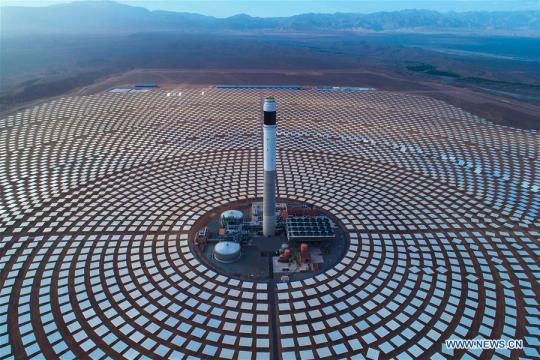
Ouarzazate Solar power station also called #Noor solar station, is the world's largest solar thermal power plant.
http://blog.mulaay.ws/
#morocco#moroccan#travel#africa#tourism#marrakesh#highatlas#sahara#desert#energy#solar#solar energy#solar power#ouarzazate#ecology#ecosystem
5 notes
·
View notes
Text
Sahara – the largest green power on earth
Sahara which means “the greatest desert” in Arabic is the largest hot desert on earth. Spread over 3.6million square miles, predominantly in northern Africa but extending as fat as wand is also one of the places on earth which receives sunlight of more than 12+ hrs/day all year long. This enormous solar capacity can be tapped to power the entire world with solar energy. An estimate in 2019 by researchers determined that even if 1.2% of Sahara ‘s landscape is converted to a solar farm its generated power will be enough to power the energy demand of the entire world. This large-scale installation can also have effects on the climatic conditions of Sahara too. The Saharan sand being lighter and pale reflects most of the sunlight leading to reduced rainfall. The presence of solar panels in large scale leads to more absorption of the heat into the ground which in turn increases the chances of precipitation over the area which in turn can lead to vegetative cover as well.
But it’s not as simple as it may sound. As the Sahara is spread over geographically distinct countries everyone’s co-operation is required. Then comes the economic issues. The initial cost of installing these panels, mode of transportation across continents and the supply of these power to grids across African nations with changing geopolitical mindsets makes it a difficult task. Projects such as Ouarzazate Solar Power Station in Morocco, it is the world's largest concentrated solar power plant. With a capacity of 510 MW and an additional 72 MW photovoltaic system the entire project is planned to produce 582 MW at peak when finished and is being built in 3 phases/4 parts with the entire estimated cost around $2.5 billion.
As the world is fast switching to renewable energy sources, we hope one day breaking all barriers, this Saharan energy can be utilized to power the world ahead!
To power our home with this technology of the future visit our entire collection of solar products at greenpowerpalace.com across various ranges from lightings to solar power systems for your entire home right from your home without the need to visit the solar installer near you and be part of the green technology of the future.
0 notes
Photo
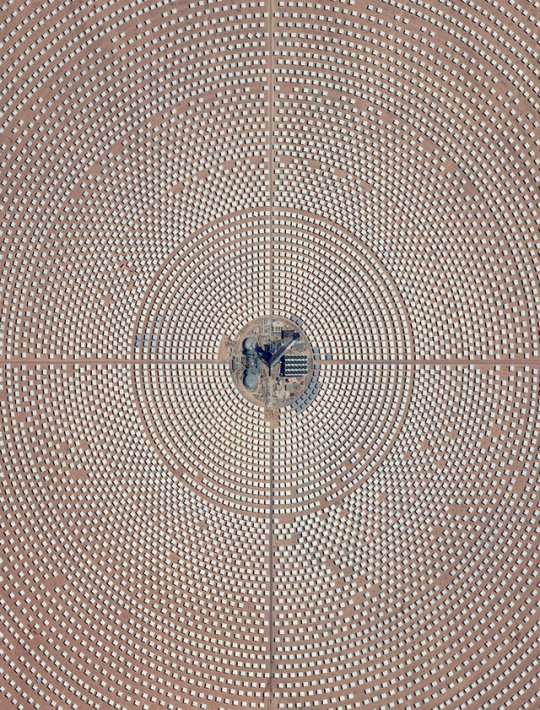
Ouarzazate Solar Power Station, Morocco. Thousands of mirrors focus the sun’s thermal energy to heat molten salt flowing through a massive central tower. The molten salt then circulates from the tower to a storage tank, where it is used to produce steam and generate electricity.
3 notes
·
View notes
Photo
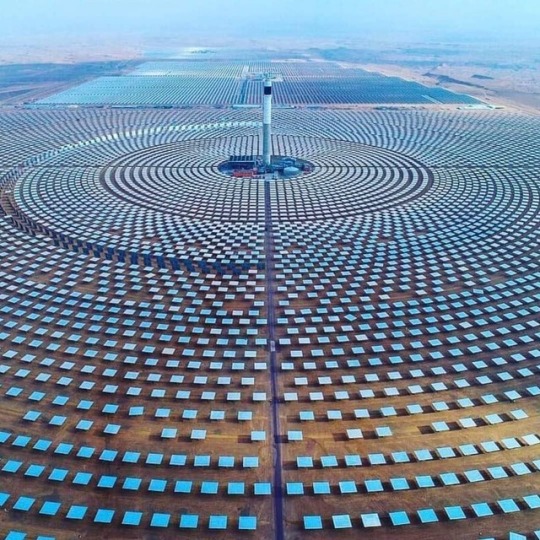
Ouarzazate Solar Power Station in Morocco☀️ The world’s largest solar thermal power plant which will be able to produce around 580MW of power at peak, and store solar energy in the form of molten salt. Area coverage of 2,500 hectares. https://www.instagram.com/p/BxsFzAzFnqo/?igshid=1kod4f6sdrt60
0 notes
Photo

Ouarzazate Solar Power Station in Morocco☀️ The world’s largest solar thermal power plant which will be able to produce around 580MW of power at peak, and store solar energy in the form of molten salt. Area coverage of 2,500 hectares. Credit to Solarvest News https://www.instagram.com/p/BxWCAuLlXvX/?utm_source=ig_tumblr_share&igshid=bzgp9gbekzp3
0 notes
Text
Energy Tech Roundup for February 8
This week’s Energy Tech Roundup includes details on the world’s largest solar farm in Morocco, a new carbon capture program in the UK, and plans for a massive solar facility in Egypt’s Western Desert.

Morocco in the fast lane with world's largest concentrated solar farm
Morocco is now the home of the world's largest solar farm at the Noor-Ouarzazate complex. Measuring about the size of 3500 football fields according to CNN, this tremendous complex, situated at an entry point to the Sahara desert, supplies 580 megawatts of electricity and saves about 760,000 tons of carbon emissions from being released in to the atmosphere. The Noor-Ouarzazate solar farm is part of Morocco's very ambitious climate plan, looking to get more than 40% of its energy from renewables by next year. Also notable about this Moroccan complex, in addition to its sheer massive size, is that it is made up of curved solar panels, which retain heat during the night and on cloudy days. By 2030, Morocco's energy demand is expected to double from what it was in 2010.
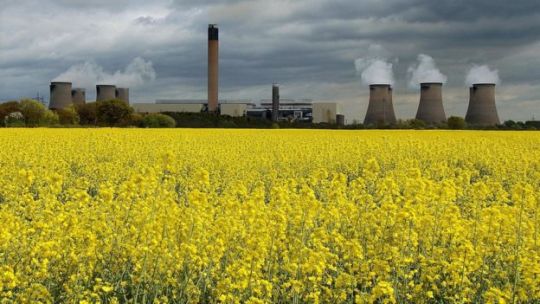
Climate change: UK carbon capture project begins
And now, we switch gears from a giant solar farm in the Sahara to the story of the giant Drax Power Station in North Yorkshire, UK, which produces 6% of the UK's electricity. BBC reports that the Drax station, which burns wood chips as fuel, is the first in Europe to capture its carbon dioxide from wood burning. One ton of carbon dioxide is captured per day. Carbon capture like this is a bit controversial because trapping the carbon dioxide may harm plants and animals that depend on it. It also takes extra energy to capture it and adds additional problems to the environment like massive deforestation. Beyond these issues, the next steps for Drax is what to do with the carbon dioxide once it is effectively trapped. The best outcome would be to find customers who will purchase it for manufacturing purposes or even begin using the captured carbon for their own engineering and scientific needs.

Egypt Is Building One of the Largest Solar Parks in the World
Not to be outdone by Morocco or the UK, Egypt is currently building Benban Solar Park, 400 miles south of Cairo, in the Western Desert. It is the largest solar facility of its kind currently in development and will be capable of producing about 1650 megawatts when it is completed. It is also designed to get roughly 20% of its output from the use of renewables, according to EnergyCentral. Benban will also be the first energy facility in Egypt not wholly owned by the government, with more than a dozen private companies putting the investment money together to get Benban built. In addition to Benban, Egypt is also planning several windfarms in the Red Sea and the Gulf of Suez, as well as a nuclear power plant set to be activated in 2026.
#energy#energynews#energytech#energytechnews#energytechnology#energytechnologynews#technews#tech#technologynews#technology#newyork#ny#nys#nystate#newyorkstate#news
0 notes
Photo

Noor 3 is one of four sections of the Ouarzazate Solar Power Station in the Drâa-Tafilalet region of Morocco. The solar concentrator contains thousands of mirrors that focus the sun’s thermal energy to heat molten salt flowing through a massive central tower. The molten salt then circulates from the tower to a storage tank, where it is used to produce steam and generate electricity. This segment of the facility opened in spring of this year and is expected to begin delivering power to Morocco’s electricity grid by October.
Instagram: https://bit.ly/2Crokra
31°00′33″N, 6°51′44″W
Source imagery: DigitalGlobe
449 notes
·
View notes
Text
May 16 Green Energy News
Headline News:
“Elon Musk Harpooned Baseload Power” • In its first four months of operations the “big battery,” the Hornsdale Power Reserve, frequency control ancillary services prices went down by 90% in South Australia. The 100-MW battery has received over 55% of the FCAS revenues. This cuts into opportunities for fossil fuels deeply. [CleanTechnica]
Hornsdale Power Reserve
Pacificorp, a Berkshire Hathaway electric utility in six Western states, projects new resources of 2.7 GW of wind, 1.86 GW of solar, 1.877 MW of incremental energy efficiency, and 268 MW of demand response. Pacificorp also expects to repower 999 MW of wind. But it foresees no new fossil fuel resources in the decades to come. [pv magazine USA]
Morocco is close to completing the largest concentrated solar power farm in the world. The site near the city of Ouarzazate aims to produce enough energy to power more than a million homes by the end of the year and reduce carbon emissions by an estimated 760,000 tons per year. The first phase was officially turned on in 2016. [CNN]
Britain’s windfarms provided more electricity than its eight nuclear power stations in the first three months of 2018, marking the first time wind has overtaken nuclear across a quarter. During the first quarter, wind power produced 18.8% of electricity, second only to gas, said a report by researchers at Imperial College London. [The Guardian]
“Renewables Investment Nudges Out Fossil Fuel And Nuclear” • In 2017 the clean energy industry reached a critical turning point. Growth and cost reductions have both far outperformed expectations based on policy frameworks alone. Improvements in cost, scale, and technology fundamentally have changed market dynamics. [Forbes]
For more news, please visit geoharvey – Daily News about Energy and Climate Change.
May 16 Green Energy News posted first on Green Energy Times
0 notes
Text
Najväčšia koncentrovaná solárna elektráreň na svete
Navštív najväčšiu slnečnú elektráreň na svete. Nachádza sa približne 200km od Marakéš.
Ak prechádzaš za jasného slnečného počasia v blízkosti Ourzazate, je takmer nemožné si nevšimnúť žiariacu gigantickú vežu na obzore. Veža obklopená mohutnými lúčmi slnečného žiarenia vyzerá ako marocká verzia Sauronovho oka.
(more…)
View On WordPress
0 notes
Photo

Noor 3 is one of four sections of the Ouarzazate Solar Power Station in the Drâa-Tafilalet region of Morocco. The solar concentrator contains thousands of mirrors that focus the sun’s thermal energy to heat molten salt flowing through a massive central tower. The molten salt then circulates from the tower to a storage tank, where it is used to produce steam and generate electricity. This segment of the facility is scheduled to open next year and will be the largest facility of its kind in the world once all segments are functional.
31°00′33″N 6°51′44″W
http://dailyoverview.tumblr.com/post/165734376419/noor-3-is-one-of-four-sections-of-the-ouarzazate
0 notes